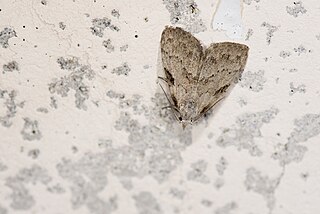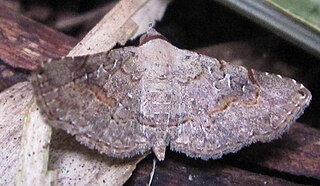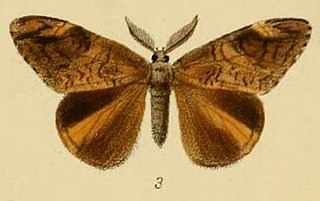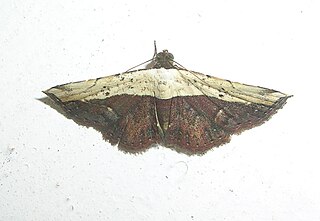
Earias is a genus of moths in the monotypic subfamily Eariadinae of the family Nolidae. The genus was erected by Jacob Hübner in 1825. Species are found throughout Europe, Africa, Asia and Australia, some being agricultural pests such as bollworms.
Lysceia is a monotypic moth genus in the subfamily Arctiinae described by Francis Walker in 1854. It contains a single species, Lysceia bigutta, described by the same author in the same book, which is found in South Africa.

Manoba is a genus of moths in the family Nolidae. The genus was first described by Francis Walker in 1863.
Acontiola is a genus of moths of the family Noctuidae. The genus was described by Staudinger in 1900.
Facidia is a genus of moths of the family Erebidae. The genus was erected by Francis Walker in 1865.
Megacephalomana is a genus of moths of the family Erebidae. The genus was described by Strand in 1943.

Meliaba is a monotypic moth genus of the family Erebidae. Its only species, Meliaba pelopsalis, is known from South Africa, Eswatini, Tanzania and Zimbabwe. Both the genus and the species were first described by Francis Walker in 1859.

Rhesala is a genus of moths of the family Erebidae. The genus was erected by Francis Walker in 1858.

Tavia is a genus of moths of the family Erebidae. The genus was erected by Francis Walker in 1858.

Aroa is a genus of moths in the subfamily Lymantriinae first described by Francis Walker in 1855. Species are distributed in South Africa, China, throughout India, Sri Lanka, Myanmar, and Java.

Crorema is a genus of moths in the subfamily Lymantriinae. The genus was erected by Francis Walker in 1855.
Marbla is a genus of moths in the subfamily Lymantriinae. The genus was erected by Charles Swinhoe in 1903.
Ogoa is a genus of moths in the subfamily Lymantriinae erected by Francis Walker in 1856. The species are known from Africa.

Olapa is a genus of moths in the family Erebidae. The genus was erected by Francis Walker in 1855.

Otroeda is a genus of moths in the subfamily Lymantriinae. The genus was erected by Francis Walker in 1854.
Acridotarsa is a genus of moths belonging to the family Tineidae. The genus was described by Edward Meyrick in 1893.

Oruza divisa is a species of moth of the family Erebidae first described by Francis Walker in 1862. It is found in Asia, including Hong Kong, Sri Lanka, Sulawesi, Taiwan, Japan and in Africa south of the Sahara, including Indian Ocean islands.
Paraphyllalia is a monotypic moth genus in the family Eupterotidae described by Max Gaede in 1927. Its single species, Paraphyllalia degenera, was described Its Francis Walker in 1855 and is found in South Africa.
Gracilanja is a monotypic moth genus in the family Eupterotidae erected by Thierry Bouyer in 2011. Its single species, Gracilanja gracilis, was described by Francis Walker in 1855. It is found in Cameroon, the Republic of the Congo, the Democratic Republic of the Congo, Equatorial Guinea, Ghana, Sierra Leone and Uganda.
Phiala costipuncta is a moth in the family Eupterotidae. It was described by Gottlieb August Wilhelm Herrich-Schäffer in 1855. It is found in Angola, the Democratic Republic of the Congo, Malawi, Namibia, Sierra Leone, South Africa, Tanzania, the Gambia and Zambia.








